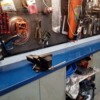Um, i don't understand the urgent need to reply to the OP 18 mos old?
or to respond to i'm not even sure what?
Today:
quote:
Originally posted by René #4406:
Is a sleeved block more or less solid than another? A french "specialist" of Pantera told me that they are less solid, I thought the opposite but I do not have much confidence in this person, it is especially a "good" seller who would like to sell me a very expensive not sleeved engine.
FWIW Rene just start a new thread next time, but sleeved vs non sleeved blocks both have their strengths & weaknesses. the unsleeved block is an unknown quantity without a sonic test report. it may not 5 miles before it opens a window in a cylinder or it may be a factory super block that can successfully be bored .100"+ there's no way to know. IMO a knowledgeable & reputable engine builder would not proceed to build any 351C block without first sonic checking the block and documenting the results for the buyer. it's in the sellers interest to protect his own reputation and financial investment unless he's a dodger
a sleeved block has already proved itself to be flawed to some degree but may be successfully repaired? then again it may not be suitable to resume service especially under more stress than ever designed for. how many of the 8 cylinders are sleeved? how many are to thin to be put back into service? again the sonic test report is the key. entirely possible that only 1 cylinder suffered core shift during the casting process and the other 7 are good, maybe not how do you know?
what warranty is the seller giving?
return shipping covered?
has the engine been run tested at all?
video documentation?
do you care to share the source of the engine, maybe someone can vouch for the seller or knows of a reason to run away?


